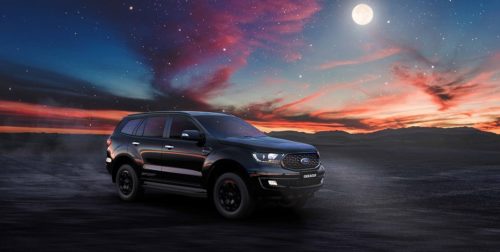What Are Driving Blind Spots & How To Overcome Them
We often hear the term “blind spot” when talking in context of driver safety and safe use of the road. In fact, a lot is said about driver blind spots, but very few actually know what they mean when they mention them.
A blind spot is the area or zone on the road outside the driver’s field of vision. Essentially, it’s the area that cannot be seen by looking forward through your windscreen, or by using your rear-view and side-view mirrors, and that is hidden by parts of the vehicle’s structure. Blind spots can be large enough in size to easily block another car, motorbike, cyclist, or pedestrian from your view.
However, this surely doesn’t mean that you can’t see cars in blind spots at all. It’s just that they can’t be seen with mirrors alone. You’ll just need to do a “head check,” and physically turn your head and neck to look over your right or left shoulder before performing any other driving manoeuvre.
All vehicles – cars, bikes, trucks, trains, and planes – have blind spots. And it is important to note that by obscuring visibility around the vehicle, blind spots create situations wherein a vehicle, while turning or changing lanes, might collide with another.
Blind spots are obviously dangerous; how then can we eliminate them?
ADJUST YOUR MIRRORS

The first line of defence in combating blind spots is correct mirror adjustment. Cars typically have three mirrors – the cabin rear-view mirror, the right outside rear-view mirror, and the left outside rear-view mirror. All three need to be adjusted to ensure that you have the greatest peripheral vision from your position in the driver’s seat. A common mistake while adjusting the mirrors is creating overlaps in their visual field. You want to adjust all three mirrors so that their visual fields don’t overlap but sit perfectly adjacent to one another. This way, you get the widest field of view from one side to the other.
Here’s how to do this:
- Adjust the cabin rear-view mirror to ensure that the rear windscreen is framed
- While in the driver’s seat, rest your head against the front right window and adjust the right outside rearview mirror so that only a small part of the car’s right flank is visible
- Lean to the centre of the vehicle, right above the console, and adjust the left outside rearview mirror so that only a small part of the car’s left flank is visible
Well-adjusted mirrors will minimize your blind spot area but depending on the size and shape of your car, they might not eliminate it entirely.
USE TURN INDICATORS

Generally, a car has two main blind spots – on the rear left and right side. Hence, use of turn indicators becomes essential. Although the turn indicators may not eliminate blind spots, but it does reduce the risk attached to them. Using turn indicators to change lanes or make a turn warns vehicles on either side of your car about your intentions. As such, it allows them to slow down to allow for your movement. If they cannot do so, it gives them the opportunity to either flash their lights or honk to let you know that they need to pass first.
LOOK OVER YOUR SHOULDER

This might sound counter-intuitive, but one of the surest ways to eliminate blind spot risks is by quickly looking over your shoulder before you change lanes or turn off. Since this requires you to momentarily take your eyes off the road, it must be executed with utmost care and diligence. You need to start by signalling your intention by activating the relevant turn indicator. Then, make sure there’s enough space between the vehicle in front and yourself. While keeping your steering steady (so you don’t unintentionally veer out of your lane) quickly steal a glance over your shoulder in the direction your car needs to move. Having looked at your blind spot and ensuring it’s unoccupied, you can move in the direction signalled by your turn indicators.
If your car has power adjustable outside rear-view mirrors, as most Ford cars do, you can adjust them from the comfort and safety of your seat to get a wider range of view. This eliminates the need to look over your shoulder. Also, thanks to the technology prowess and safety gear Ford equips its cars with, parallel parking or reversing anywhere is easier and safer in a Ford, rear parking sensors and, in some models – a rear-view camera.
BE MINDFUL OF OTHER VEHICLES’S BLIND SPOTS

As a responsible driver, you also need to be mindful of other vehicles’ blind spots. Always drive defensively. Make sure you don’t spend too much time in another car’s blind spot, especially if they are signalling a turn using their indicators. Remember, they cannot see you when you are in their blind spot. If you think a vehicle might be veering into your path, flash your lights or tap the horn to warn them of your presence.
Blind spots are inevitable, but by being careful, diligent, and defensive behind the wheel, you can mitigate the risks associated with them.
Subscribe to our newsletter
Subscribe to our newsletter to stay upto date with latest news, offers and much more



